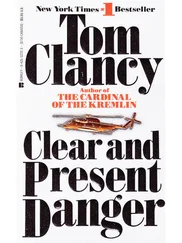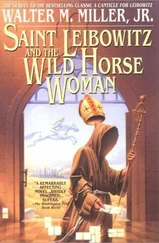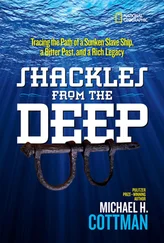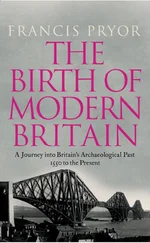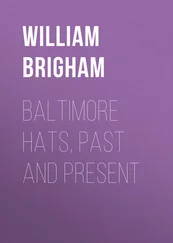Walter Gilbey - Horses Past and Present
Здесь есть возможность читать онлайн «Walter Gilbey - Horses Past and Present» — ознакомительный отрывок электронной книги совершенно бесплатно, а после прочтения отрывка купить полную версию. В некоторых случаях можно слушать аудио, скачать через торрент в формате fb2 и присутствует краткое содержание. Жанр: Природа и животные, foreign_antique, foreign_prose, на английском языке. Описание произведения, (предисловие) а так же отзывы посетителей доступны на портале библиотеки ЛибКат.
- Название:Horses Past and Present
- Автор:
- Жанр:
- Год:неизвестен
- ISBN:нет данных
- Рейтинг книги:3 / 5. Голосов: 1
-
Избранное:Добавить в избранное
- Отзывы:
-
Ваша оценка:
- 60
- 1
- 2
- 3
- 4
- 5
Horses Past and Present: краткое содержание, описание и аннотация
Предлагаем к чтению аннотацию, описание, краткое содержание или предисловие (зависит от того, что написал сам автор книги «Horses Past and Present»). Если вы не нашли необходимую информацию о книге — напишите в комментариях, мы постараемся отыскать её.
Horses Past and Present — читать онлайн ознакомительный отрывок
Ниже представлен текст книги, разбитый по страницам. Система сохранения места последней прочитанной страницы, позволяет с удобством читать онлайн бесплатно книгу «Horses Past and Present», без необходимости каждый раз заново искать на чём Вы остановились. Поставьте закладку, и сможете в любой момент перейти на страницу, на которой закончили чтение.
Интервал:
Закладка:
The distinction between some of these classes was probably somewhat slight. The palfrey was the animal used for daily riding for pleasure or travel by persons of the upper ranks of life, and was essentially the lady’s mount, though knights habitually rode palfreys or hackneys on the march, while circumstances allowed them to put off for the time their armour. The weight of this, with the discomfort of wearing it in the cold of winter and heat of summer, furnished sufficient reason for the knights to don their mail only when actually going into action, or on occasions of ceremony.
“Hengests and somers” were probably used for very similar purposes, as more than once we find them coupled thus: these were the baggage or transport animals, and were doubtless of no great value. “Courser” is a term somewhat loosely used in the old records; it is applied indifferently to the war horse, to the horse used in hunting, and for daily road work, but generally in a sense that suggests speed. “Trotters,” we must assume, were horses that were not taught to amble; and the name was distinctive at a period when all horses used for saddle by the better classes were taught that gait. Edward III.’s Wardrobe Accounts mention payment for trammels , the appliances, it is supposed, used for this purpose, and at a much later date in another Royal Account Book, we find an item “To making an horse to amble, 2 marks (13s. 4d.).” The amble was a peculiarly easy and comfortable pace which would strongly commend itself to riders on a long journey. Hobbies were Irish horses, small but active and enduring; genets were Spanish horses nearly allied to, if not practically identical with, the barbs introduced into Spain by the Moors. The animal described as a “nag” was probably the saddle-horse used by servants and camp followers.
RICHARD II. (1377-1399)
Richard II. was fond of horses and did not neglect the interests of breeding; though he on one occasion displayed his regard in a fashion which to modern minds is at least high-handed. There was a scarcity of horses in the early years of his reign, and prices rose in conformity with the law of supply and demand. Richard, considering only the needs of his knights, issued a proclamation (1386) forbidding breeders to ask the high prices they were demanding. This proclamation was published in Lincolnshire, Cambridgeshire and Yorkshire.
Passing mention may be made of an Act which was placed on the Statute Book in 1396. In those days all travelling was performed on horseback, and the equivalent of the coach or jobmaster of much later times was the hackneyman, who let out horses to travellers at rates of hire fixed by law. The hackneymen were in the very nature of their business liable to be imposed upon by unprincipled persons, who would demand horses from them without tendering payment, on the false plea that they were royal messengers journeying in haste on business of the State. Not infrequently, too, the hirer or borrower was none other than a horse-thief, who rode the animal into some remote country town, and sold him to whoever would buy. Richard II.’s Act of 1396, aimed at suppression of these practices, laying penalties upon anyone found guilty of them; and it further called upon the hackneymen to help themselves by placing a distinctive mark on their horses. Any animal bearing such a mark might be seized by the hackneyman if he found it in possession of another, and no compensation could be claimed by the person from whose custody it was taken.
The earliest account of a race that we can trace (apart from the sports at Smithfield) refers to the year 1377, the first of Richard’s reign. In that year the King and the Earl of Arundel rode a race 4 4 “The History of Newmarket.” By T. P. Hore. (3 vols.) H. Baily & Co. London, 1886.
(particulars of conditions, distance, weights, &c., are wanting!), which it would seem was won by the Earl, since the King purchased his horse afterwards for a sum equal to £20,000 in modern money.
For nearly a hundred years after the deposition of Richard II., the available records throw little or no light upon our subject. The Wars of the Roses (1450-1471) were productive of results injurious alike to agriculture, stock breeding, and commerce. During a period when horses for military service were in constant demand, and were liable, unless the property of some powerful noble, to seizure by men of either of the contending factions, it was not worth any man’s while to breed horses, still less to try to improve them. The fifteenth century, therefore, or at least a considerable portion of it, saw retrogression rather than progress in English horse-breeding.
HENRY VII. (1485-1509)
Henry VII., in 1495, found the horse supply of the country so deficient, and the prices so high, that he passed an Act forbidding the export of any horse without Royal permission, on pain of forfeiture, and of any mare whose value exceeded six shillings and eightpence; no mare under three years old might be sent out of the country, and on all exported a duty of six shillings and eightpence was levied.
Under the old “Statutes of Arms” Henry VII. established a force known as Yeomen of the Crown. There were fifty of these; each yeoman had a spare horse and was attended by a mounted groom. In times of peace they acted as Royal messengers carrying letters and orders. In disturbed times they formed the backbone of the militia levies.
HENRY VIII. (1509-1547)
Henry VIII. went a good deal further in his efforts to foster and promote the breeding of good horses. In 1514 he absolutely forbade the export of horses abroad, and extended the prohibition to Scotland. He obliged all prelates and nobles of a certain degree, to be ascertained by the richness of their wives’ dress, to maintain stallions of a given stature. He made the theft of horse, mare, or gelding a capital offence, and deprived persons convicted under this law (37 Henry VIII., c. 8) of the benefit of clergy. And by two Acts, the gist of which will be found on page 5 et seq. of Ponies Past and Present , he made a vigorous attempt to weed out the ponies whose small size rendered them useless.
It is to be borne in mind that the King’s legislation against the animals that ran in the forests and wastes aimed definitely at the greater development and perfection of the Great Horse. Armour during Henry VIII.’s time had reached its maximum weight, and a horse might be required to carry a load of from 25 to 30 stone; 5 5 See The Great Horse or War Horse (p. 26). Third edition. By Sir Walter Gilbey, Bart. Vinton & Co., Ltd. 1899.
hence very powerful horses were indispensable.
Henry’s interest in horseflesh was not confined to the breed on which the efficiency of his cavalry depended. He was a keen sportsman, who took a lively pleasure in all forms of sport, and he appears to have been the first king who ran horses for his own amusement. It would hardly be correct to date the beginnings of the English Turf from Henry VIII.’s reign, as the “running geldings” kept in the Royal Stables at Windsor seem to have been run only against one another in a field hired by the king for the purpose.
The Privy Purse Expenses contain very curious scraps of information concerning the running geldings, their maintenance, and that of the boys retained to ride them. There is mention of “rewardes” to the keeper of the running geldings, to the “children of the stable,” and also to the “dyatter” of the running geldings. This last functionary’s existence is worth notice, as it indicates some method of training or dieting the horses. Nearly seventy years later – in 1599 – Gervaise Markham produced his book, “How to Chuse, Ryde and Dyet both Hunting and Running Horses.”
Читать дальшеИнтервал:
Закладка:
Похожие книги на «Horses Past and Present»
Представляем Вашему вниманию похожие книги на «Horses Past and Present» списком для выбора. Мы отобрали схожую по названию и смыслу литературу в надежде предоставить читателям больше вариантов отыскать новые, интересные, ещё непрочитанные произведения.
Обсуждение, отзывы о книге «Horses Past and Present» и просто собственные мнения читателей. Оставьте ваши комментарии, напишите, что Вы думаете о произведении, его смысле или главных героях. Укажите что конкретно понравилось, а что нет, и почему Вы так считаете.

